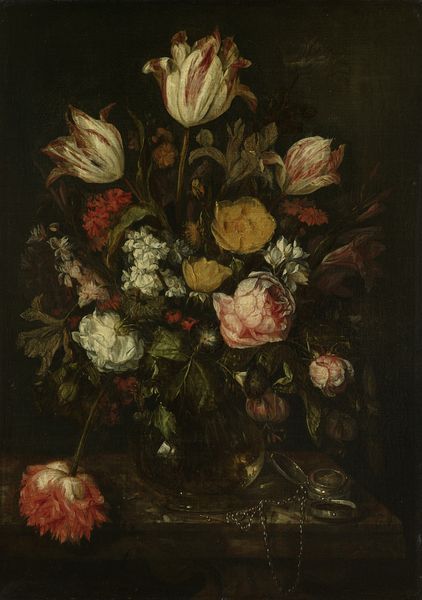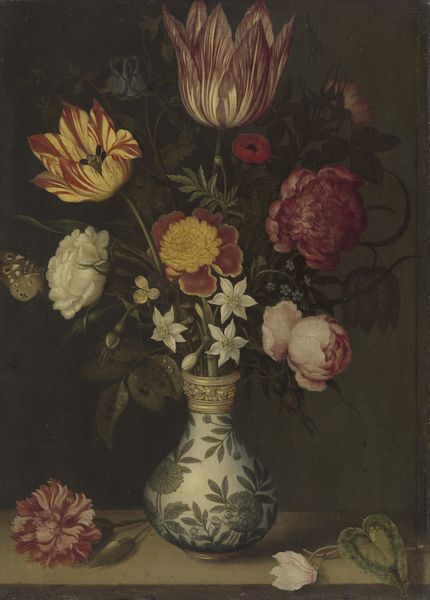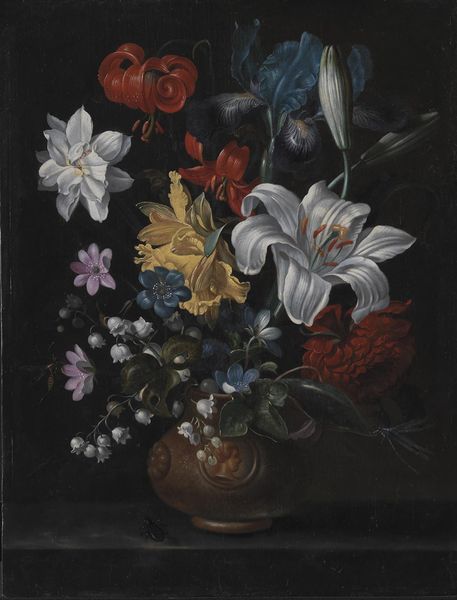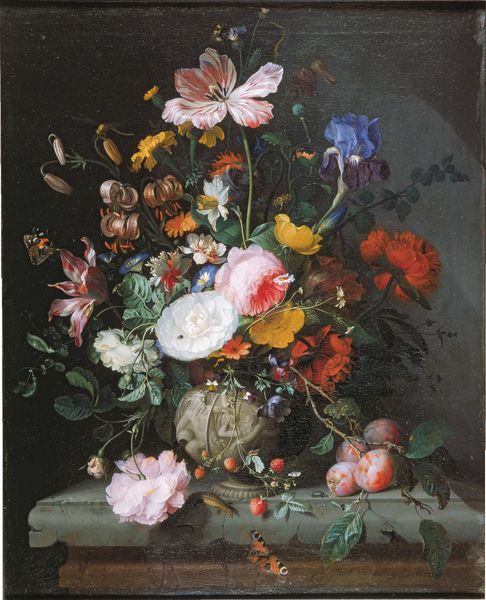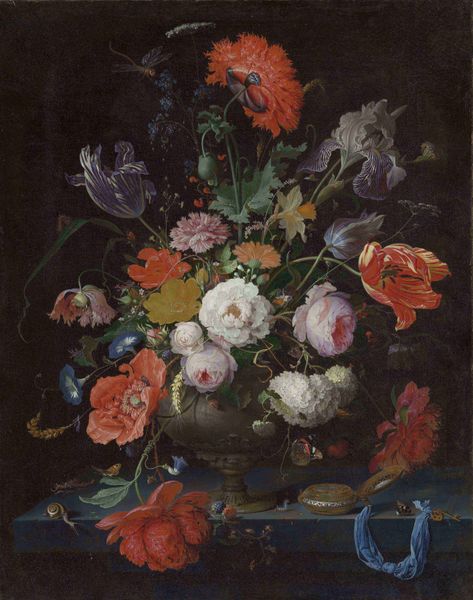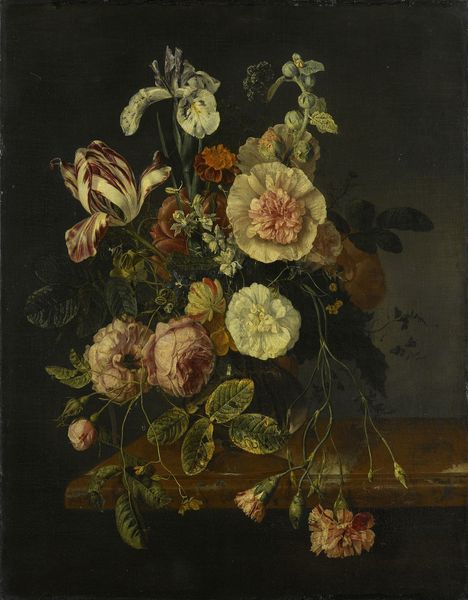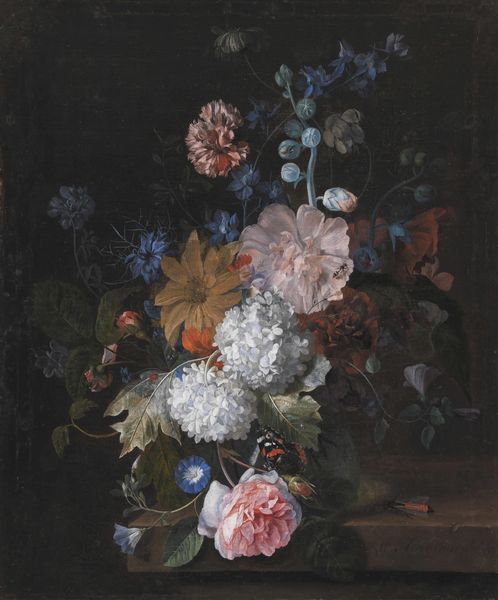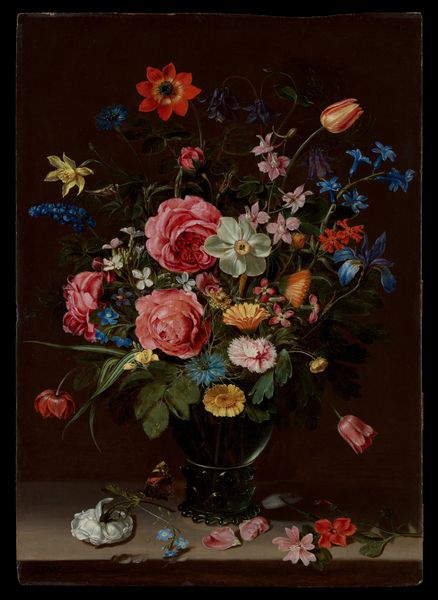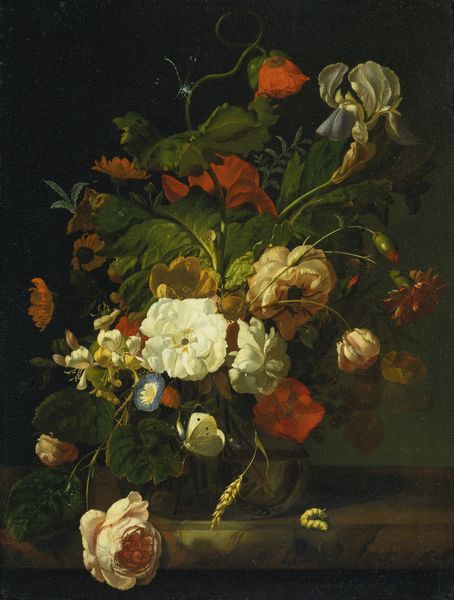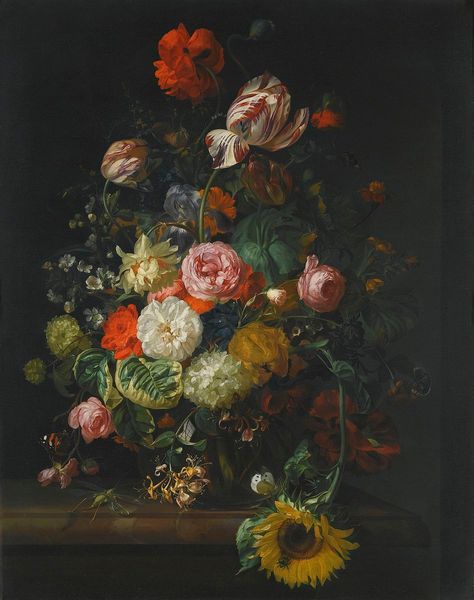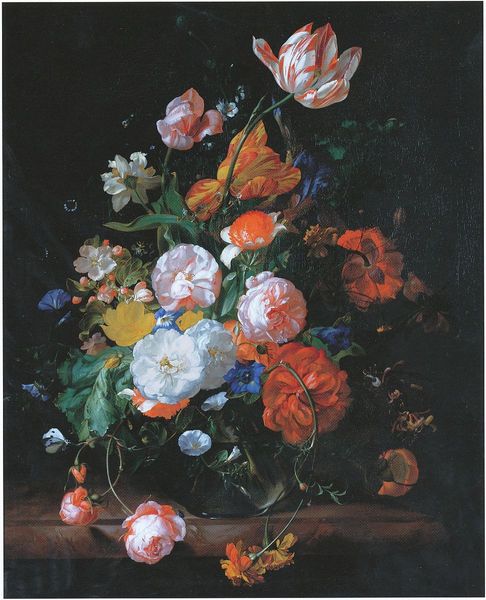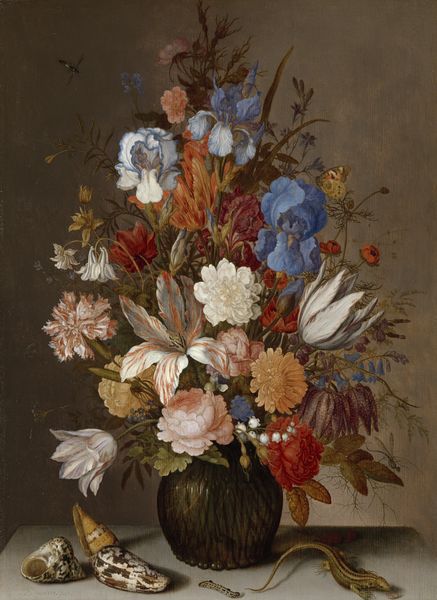
painting, oil-paint
#
baroque
#
dutch-golden-age
#
painting
#
oil-paint
#
flower
#
vase
#
oil painting
#
vanitas
Dimensions: 19 1/2 x 15 7/8 in. (49.5 x 40.3 cm)
Copyright: Public Domain
Curator: Ah, here we are in front of Nicolaes van Veerendael's "A Bouquet of Flowers in a Crystal Vase" from 1662. It resides here at the Metropolitan Museum of Art. Editor: What immediately strikes me is the intense contrast! The flowers, practically glowing against that inky, almost impenetrable black background. There's a real sense of drama. Curator: Indeed. Veerendael, working within the Dutch Golden Age, uses the flower still life genre, a popular style at the time, as a meditation on mortality and the transience of beauty. These kinds of artworks carry strong vanitas themes, reminding us about the ephemeral nature of life and pleasure. Editor: I see it now! The butterfly on the rose…a beautiful creature, a symbol for the soul’s journey to find true enlightenment. It gives me an allegorical vibe with nature taking center stage as a symbol for life and death. Does the type of flower used have special meanings as well? Curator: Absolutely. Each bloom would have carried significance. For instance, the tulips are a popular subject, representing wealth but also reckless consumerism. They quickly gained and lost popularity which eventually resulted in one of the earliest economic bubbles ever. And, given the global trade routes established during this period, the specific flowers in the painting highlight not just the artist's skill but also Dutch economic and social power. Editor: So it’s almost a visual encyclopedia of cultural values! Even the vase itself suggests clarity and luxury, an attempt to contain something essentially uncontrollable, the march of time and decay. Curator: Precisely! Furthermore, looking beyond this individual work to understand broader patterns in the history of still-life paintings, especially how female artists were often steered into this genre despite its low status compared to other artworks is paramount. Thinking of its reception by diverse audiences throughout history reveals changing attitudes toward the Dutch colonial project, wealth, and women's involvement in art. Editor: And it’s all captured through such meticulous detail. This painting doesn't just represent flowers. It presents us a symbolic language rich in meanings from economics, mortality, culture, and beauty. The way Veerendael has intertwined the themes leaves the viewer feeling thoughtful about the subject of life, loss, beauty, and our brief time within it. Curator: I find I am pondering where art will take us, always a historical lesson for us all, don't you think? Editor: Always!
Comments
No comments
Be the first to comment and join the conversation on the ultimate creative platform.
